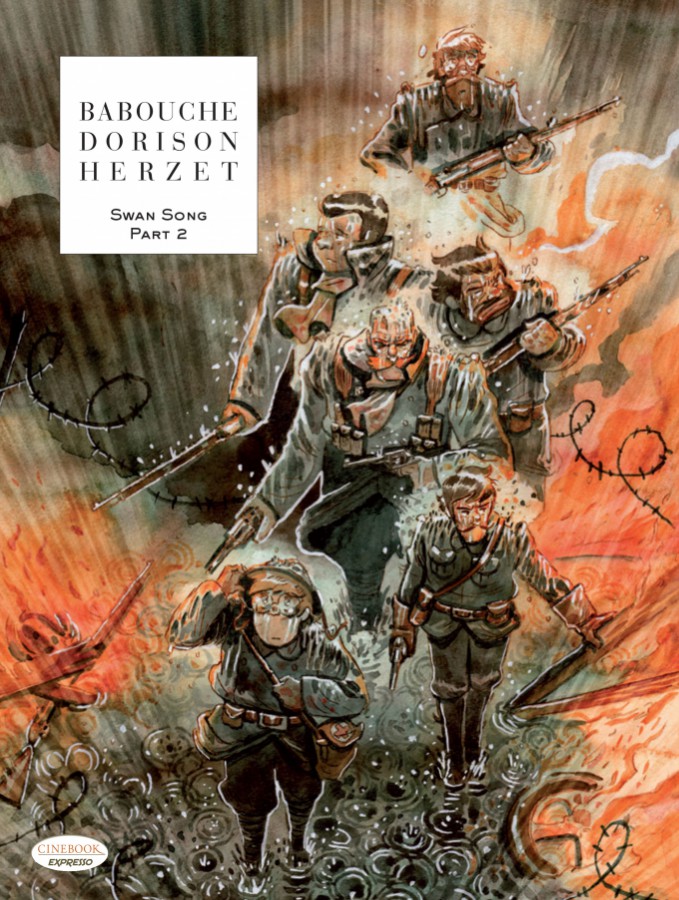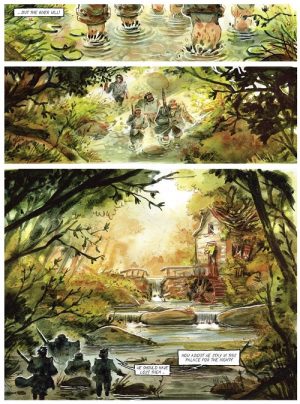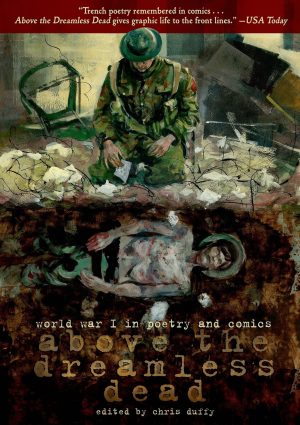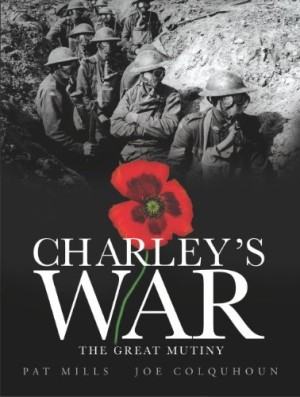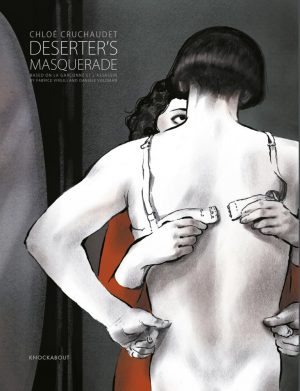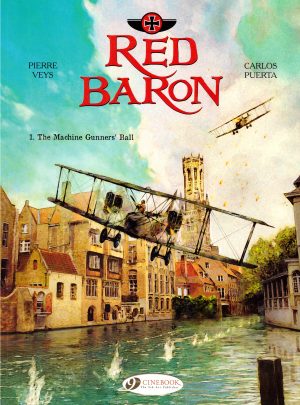Review by Jamie McNeil
“Dulce et decorum est pro patria mori” the Roman lyricist Horace declared in one of his Odes – “What a joy to die for the Fatherland!” At the time of World War I most people wholeheartedly believed this, with monarchs, politicians, and journalists pontificating on the honour of doing so. It was largely unquestioned until the war poet Wilfred Owen called the phrase “that old lie” in his harrowing poem of the same title. It is a question that echoes throughout Swan Song, a tale set in World War I though Part II finds that the answer changes each time you reframe the question.
Writers Xavier Dorison and Emmanuel Herzet set Swan Song during the little-known French Army Mutinies of 1917 and where Part I set the tone and context while introducing their cast, the conclusion sees the players heading towards an inevitable tragic end. The spoiler-free summary is that Lieutenant Kazinsky, Sergeant Pat Sabiane, and their group of volunteers are en route to Paris to deliver the Hill 108 petition to a contact in the French Parliament. However, there’s fierce pursuit by Major Morvan, a gendarme ominously known as The Puzzle. He’s called that for a reason and illustrator Cédric Babouche ensures the reader knows why.
Babouche’s artwork is key to setting the tone, so while it’s obvious that the mission won’t end well, his illustrations ensure engagement. He’s equally adept at capturing contrasts between the savagery of conflict and the idyllic pace of French pastoral life (sample art) or the beautiful vibrancy of Paris. Babouche renders the action superbly, and excels in depicting meaningful and simply human moments. A soldier sacrificing his life for his squad’s safety is powerful, but equally affecting are scenes of camaraderie as men share a raucous drink while young people flirt with each other. Even more effective are panels where the men discuss the ramifications of their actions with a calm acceptance.
In Part I Dorison and Herzet appeared to have their cast divided into good guys and bad guys with a clear opinion, but as the plot progresses the boundaries blur. Many factors motivated the Mutinies and while the writers don’t explore them fully, they do acknowledge them, albeit subtly in smatterings of dialogue. Each player has a different driver based on political leanings, geopolitical factors of the era, social standing, personal experience, a sense of duty, or personal moral values. It’s largely thanks to such a textured cast distinctly illustrated by Babouche that they can explore these opposing views to the point that the reader is left to ponder their own conclusions on Horace’s declaration.
Swan Song Part II is a beautifully rendered and translated tale that can be approached in one of two ways. Treat the series as a period drama with fantastic art and a decent plot and you’ll be entertained, but you won’t be able to avoid comparisons to other stories about the Great War. The second approach requires a little more work. Google the history and suddenly the story makes sense as you’re struck with a curiosity the creators have piqued. It adds a greater appreciation of just how well the story is told, setting it apart from others in the same vein.
What you choose is up to you.
